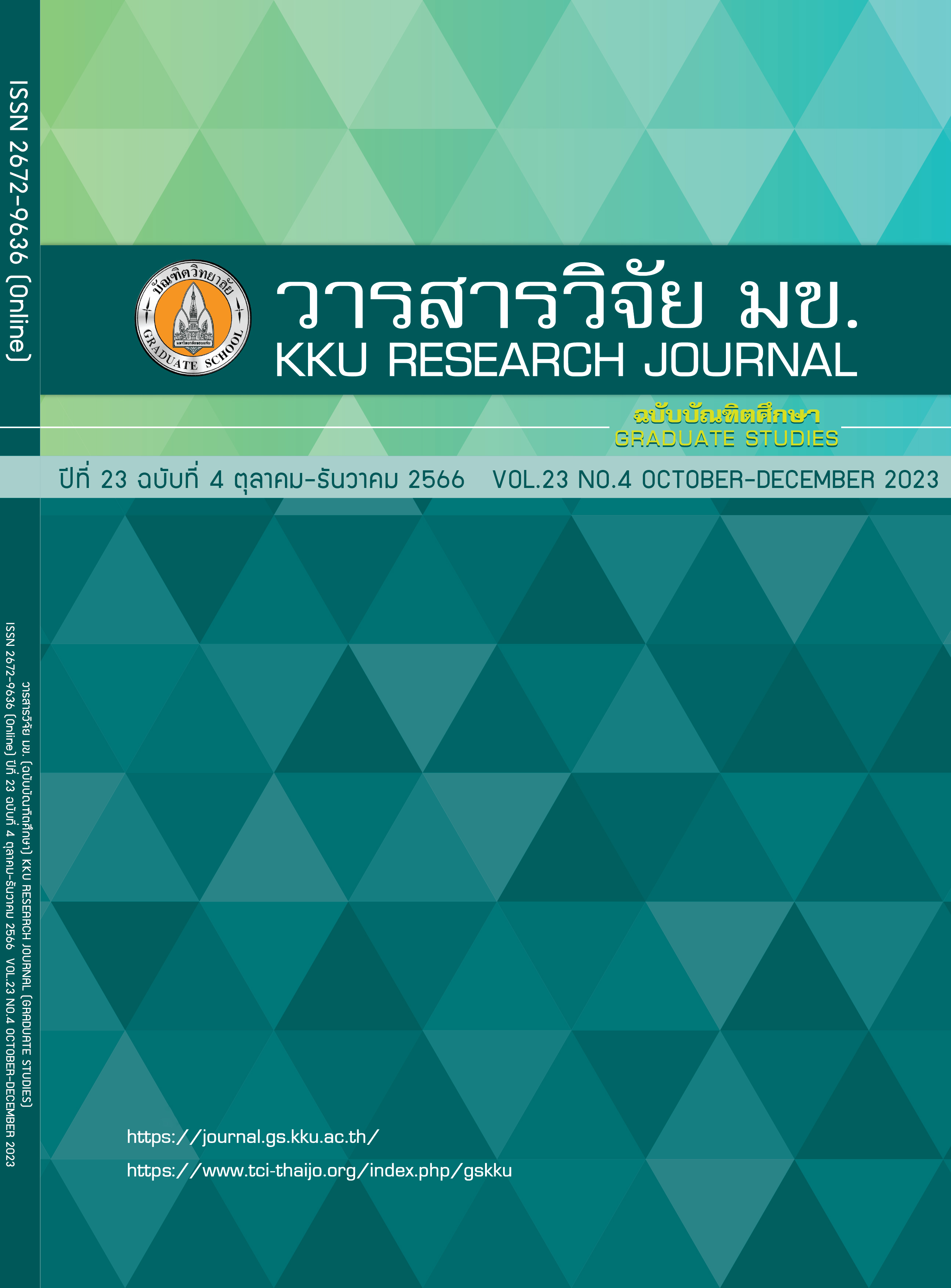Utilization of Disposed Waste Brick in Concrete Work
Keywords:
Corrosion, Concrete, Disposed waste brickAbstract
This research presents the development ground waste brick as a fine aggregate for producing concrete. Normal fine aggregate was partially replaced with ground waste brick at the dosage levels of 0%-100% by weight of normal fine aggregate. Ordinary Portland Cement Type I (CT) was used. Water to cement ratio (W/C) with constant of 0.48 was used. Superplasticizer (SP) was used to control the workability of concrete mixes. Compressive strength, porosity and resistance to the corrosion of concrete were investigated. Test results were found that the use of ground waste brick at the dosage levels of 25%-100% by weight of normal fine aggregate decreased compressive strength and increased porosity of concrete. However, the use of ground waste brick at the dosage levels of 25% by weight of normal fine aggregate improved resistance to the corrosion of concrete in comparison with that of ground waste brick at the dosage levels of 0%, 50%, 75% and 100% by weight of normal fine aggregate.
References
Kae-Long L, Bor-Yann C, Chyow-San C, Cheng An. Waste brick's potential for use as a pozzolan in blended Portland cement. Waste management & research. 2010; 28(7): 647-652.
Kae-Long L, Hsiu-Hsien W, Je-Lueng S, Chao-Lung H, Cheng An. Recycling waste brick from construction and demolition of buildings as pozzolanic materials. Waste management & research. 2010; 28(7): 653-659.
Chaisakulkiet U, MakaratAt N, Rukzon S. Development of aggregate from bottom ash in environmentally friendly concrete. Journal of Metals, Materials and Minerals. 2022; 32(2): 101-108.
Kasemchaisiri R, Tangtermsirikul S. Properties of self-compacting concrete incorporating bottom ash as a partial replacement of fine aggregate. ScienceAsia. 2008; 34: 87-95.
Yuksel I, Turhan B, Ozkan O. Durability of concrete incorporating non-ground blast furnace slag and bottom ash as fine aggregate. Building and Environment. 2007; 42(7): 2651-2659.
Andrade L, Rocha J, Cheriaf M. Influence of coal bottom ash as fine aggregate on fresh properties of concrete. Construction and Building Materials. 2009; 23(2): 609-614.
Abhishek S, Khurana G. Strength evaluation of cement concrete using bottom ash as a partial replacement of fine aggregates. International Journal of Science Engineering and Technology. 2015; 3(6): 189-194.
Sanjith J, Kiran B, Chethan G, Mohan Kumar K. A study on mechanical properties of latex modified high strength concrete using bottom ash as a replacement for fine aggregate. International Journal of Emerging Engineering Research and Technology. 2015; 3(6): 114-121.
Rafieizonooz M, Mirza J, Salim M, Hussin M, Khankhaje E. Investigation of coal bottom ash and fly ash in concrete as replacement for sand and cement. Construction and Building Materials. 2016; 116: 15-24.
Navdeep S, Mithulraj M, Shubham A. Influence of coal bottom ash as fine aggregates replacement on various properties of concretes: A review. Resources, Conservation and Recycling. 2018; 138: 2018; 257-271.
Kim H, Lee H. Use of power plant bottom ash as fine and coarse aggregates in high-strength concrete. Construction and Building Materials. 2011; 25: 1115-1122.
ASTM C33. Standard Specification Concrete Aggregates. Annual Book of ASTM Standards. 2005; 04.02: 10-20.
ASTM C136. Standard Test Method for Sieve Analysis of Fine and Coarse Aggregates. Annual Book of ASTM Standards. 2005; 04.02: 88-92.
ASTM C39. Standard Test Method for Compressive Strength of Cylindrical Concrete Specimens. Annual Book of ASTM Standards. 2005; 04.02: 21-27.
ASTM C642. Standard Test Method for Density, Absorption, and Voids in Hardened Concrete. Annual Book of ASTM Standards. 2005; 04.02: 338-340.
Rukzon S, Chindaprasirt P. Strength, Chloride Penetration and Corrosion Resistance of Ternary Blends of Portland Cement Self-Compacting Concrete Containing Bagasse Ash and Rice Husk-bark Ash. Chiang Mai Journal Science. 2018; 5(4): 1863-1874.
Chindaprasirt P, Chottitanorm C, Rukzon S. Use of palm oil fuel ash to improve chloride and corrosion resistance of high-strength and high-workability concrete. Journal of Materials in Civil Engineering. 2011; 23(4): 499-503.
Chindaprasirt P, Rukzon S. Strength and chloride penetration of Portland cement mortar containing rice husk ash and ground river sand. Materials and Structures. 2015; 48(11): 3771-3777.
Chaisarn S, Rukzon S, Chindaprasirt P. Properties of Concrete Containing High Impact Polystyrene Plasticas Coarse Aggregate. KKU Research Journal (Graduate Studies). 2021; 21(4): 110-119.
Neville AM. Properties of concrete. 4th and Final Edition, Malaysia: Longman Group Limited. 1995.
Rukzon S, Chindaprasirt P, Mahachai R. Effect of grinding on chemical and physical properties of rice husk ash. International Journal of Minerals, Metallurgy and Materials. 2009; 16(2): 242-247.
MakaratAt N, Rukzon S, Chindaprasirt P. Effects of delay time and curing temperature on compressive strength and porosity of ground bottom ash geopolymer mortar. Journal of Metals, Materials and Minerals. 2021; 31(3): 134-142.
Downloads
Published
Issue
Section
License
Copyright (c) 2023 KKU Research Journal (Graduate Studies)

This work is licensed under a Creative Commons Attribution-NonCommercial-NoDerivatives 4.0 International License.



